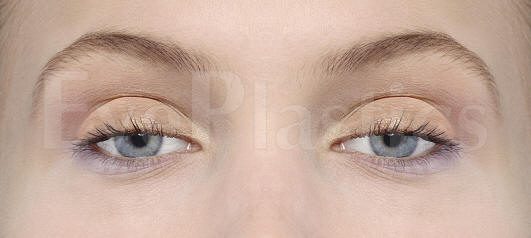Evaluation of a Ptosis Patient
Ptosis (from Greek Ptosis or πτ?σις, to "fall") is a (drooping) of the upper or lower eyelid.

Overview
- The drooping could be worse after being awake longer, when the individual's muscles are tired.
- This condition is often called "lazy eye", but that term normally refers to amblyopia.
- If severe enough and left untreated, the drooping eyelid can cause other conditions, such as amblyopia or astigmatism.
- This is a photograph of a patient with severe bilateral ptosis (Ptosis is may also be called Blepharoptosis. It refers to an eyelid which is droopy. This could cause a loss of vision, especially while reading, headaches, and eyebrow strain.
Evaluation of patients with moderate (or better levator function) could involve 2.5% phenyelphrine drops to assess the response.

When ptosis is asymmetrical (worse on one side) or unilateral, we must consider Hering's law of equal innervation
- Hering's law of equal innervation proposes that conjugacy of saccades is due to innate connections in which the eye muscles responsible for each eye's movements ar innervated equally.
- This theory is in contrast to the theory proposed by Von Helmholtz (1911) which states that conjugacy is a learned, coordinated response and that the movements of the eyes are individually controlled.
- Thus, if we surgical repair (raise) one eyelid, the OTHER eyelid could in fact become droopy.
- As you slide the control from the left to the right, you will see the 'see-saw' effect of the ptosis as the RIGHT eyelid undergoes simulated elevation, and the left eyelid drops.
Herrings Law
Procedures
- Anophthalmos
- Blepharoplasty
- Blepharospasm
- Brow Lift
- Congenital
- Dry Eye
- Eyelid Laxity
- Face
- Infections
- Inflammation
- Lacrimal System
- Lagophthalmos
- Latisse
- Locate an MD
- Orbital Tumors
- Ptosis
- Skin Rejuvenation
- Skin Tumors
- Symblepharon
- Thyroid Eye Disease
- Trauma

